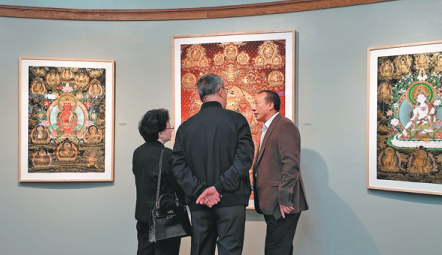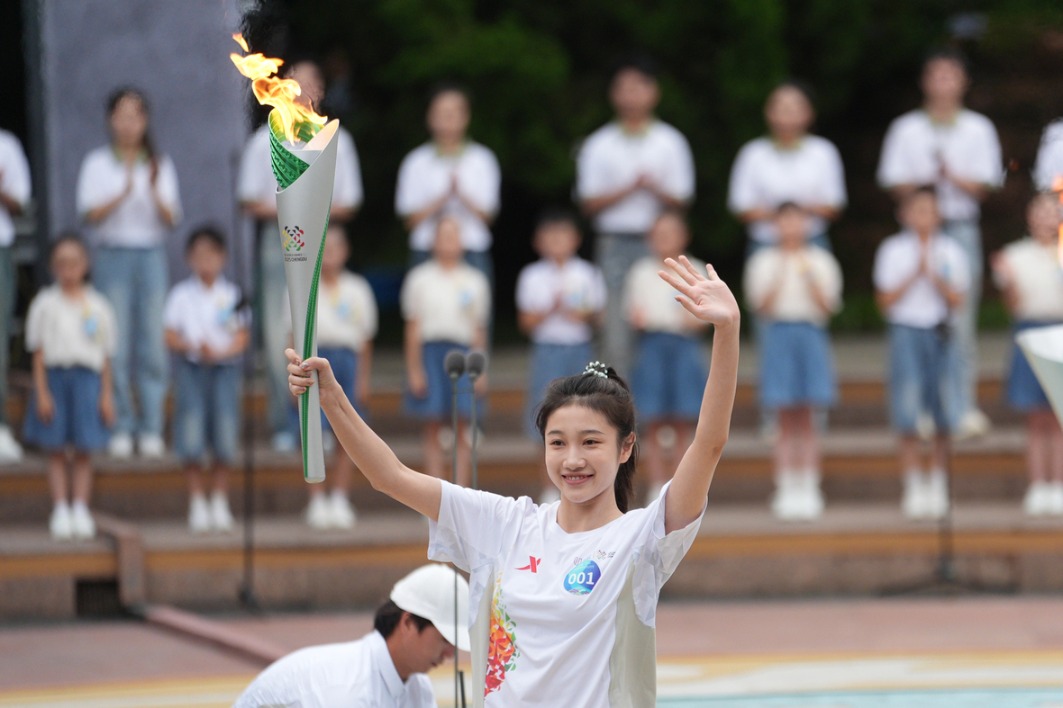Thangka artist holds exhibition in NY

Chinese Tibetan traditional thangka artist and cultural heritage inheritor Niangben continued his journey to promote and preserve Tibetan culture overseas with a special exhibition in New York.
Inheritance and Beyond is on display at the Rockefeller State Park Preserve art gallery, where the thangka master brought 16 pieces of his artwork, featuring Tibetan Buddhism.
Niangben, 53, an artist from the Regong region of Huangnan Tibetan autonomous prefecture in southeastern Qinghai, is a prominent inheritor of thangka — an art form recognized as a national intangible cultural heritage, which was also recognized by the United Nations Educational, Scientific and Cultural Organization, or UNESCO.
Renowned for its distinct ethnic identity and artistic beauty, thangka has a history spanning hundreds of years and has become increasingly popular, particularly in Northwest China.
The painting of thangka is created with precious mineral pigments like gold, silver and cinnabar, along with natural dyes from plants such as saffron and gardenia, which can make the art last for decades.
"It's amazing to see how so many beautiful works have been preserved because artists used this type of mineral pigment. Take the murals at Dunhuang or in the Potala Palace, for example — they've stayed vibrant for hundreds of years without fading. That's really something unique about our Eastern murals," Niangben told China Daily.
Mineral pigments used in thangka paintings also allow them to last for millennia and give them immense collectible value. The use of natural pigments makes the art form hard to replace with today's digital painting, Niangben explained.
Thangka art has strict requirements for color mixing, outlining and more. It not only requires the meticulous techniques of traditional Chinese painting but also demands the artist's skill in grinding pigments and controlling temperature and humidity, he said.
Niangben began learning thangka painting at age 12 and has dedicated more than 40 years to mastering the craft. As a renowned artist, he has trained hundreds of young artists at the Qinghai Huangnan Regong Painting Institute, which he established to teach impoverished children thangka painting as a skill they can use to build a livelihood.
"It's my responsibility, and I hope this culture of China's Tibetan ethnic people can be preserved by more artists like me," he said. "Art knows no borders, and this painting technique is truly rare. We hope that thangka art can be appreciated and loved by more people in the US as well."
He said he hopes that by showcasing thangka art, he can inspire more people to appreciate its unique allure and ultimately visit its place of origin, his hometown of Qinghai.































